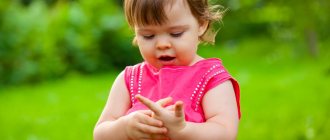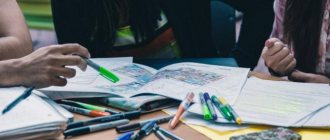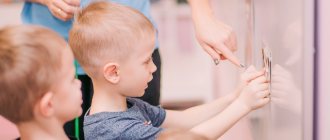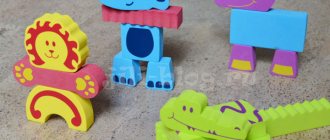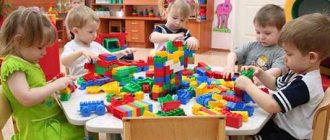Features of physical education of young children
Topic No. 1. Features of physical education of young children
Plan
1. Introduction 2. The priority of physical education at an early age 3. Physical education of a child 1 year of age 4. Physical education of a child 2 and 3 years of age 5. Conclusion 6. References 1. Introduction
In order for a child to grow and develop properly, it is necessary to begin physical education from a very early age. Physical education of toddlers involves protecting and promoting health, improving the functions of the child’s body, and his full physical development. It is aimed at the timely development of motor skills, abilities and physical qualities (strength, endurance, dexterity, speed) in children; developing interest in various types of motor activity accessible to the child; nurturing the habit of daily physical exercise, as well as positive moral, moral and volitional personality traits. The development of movements is especially important. For this purpose, morning hygienic exercises, outdoor games, physical education classes, etc. are carried out. Care should also be taken to increase the child’s physical activity throughout the day by creating an appropriate environment, selecting physical education aids and toys, and encouraging children to use it. Children are taught motor skills and abilities mainly in physical education classes. Classes are mandatory for all healthy children. They are held all year round with children under one year old individually with each child, with children of the second and third year of life in subgroups (from 1 year to 1 year 6 months for 6-8 people, with children under 2 years old for 8-10 people, with children of the third year of life 10-14 people). In physical education, a strict differentiated approach must be observed: when prescribing a regimen, nutrition, hardening procedures, when selecting games and physical exercises, their dosage takes into account the age, state of health, physical development and preparedness, as well as the individual characteristics of the child. The method of physical education of children depends on their age, but its basic principles remain the same in all age groups. Some differences in the methods of conducting physical education classes are associated only with the anatomical and physiological characteristics of children of different age groups. During classes, you should strive to develop and improve those motor skills that are most necessary at a given age. For example, in children in the first six months of life, it is necessary to develop motor skills in turning from back to stomach, from stomach to back, and a little later - crawling skills. In older children, develop and improve motor skills in the basic types of movement: walking, running, balance, climbing, throwing and jumping.
2. Priority of physical education at an early age
Physical education is for children what the foundation is for a building. The stronger the foundation, the higher the building can be built; The more care you take about a child’s physical education, the greater success he will achieve in general development, in science, in the ability to work and be a useful person for society. At no other age is physical education so closely connected with general education as in the first seven years. During the period of preschool childhood (from birth to seven years), the foundations of health, longevity, comprehensive motor readiness and harmonious physical development are laid in the child. Raising children healthy, strong, and cheerful is the task not only of parents, but also of every preschool institution, since children spend most of the day there. For this purpose, physical education classes are provided, which should be structured in accordance with the psychological characteristics of a particular age, the availability and appropriateness of exercises. Sets of exercises should be exciting, and also provide a physiologically and pedagogically necessary and justified load that satisfies the child’s need for movement. A sick, physically poorly developed child usually lags behind healthy children in school. His memory is worse, his attention gets tired faster, and therefore he cannot study well, and parents and even teachers often make the mistake of considering the child to be lazy. This weakness also causes a variety of disorders in the body’s activities, leading not only to a decrease in abilities, but also weakens the child’s will. Properly organized physical education contributes to the formation of a good physique, the prevention of diseases, and the improvement of the functioning of internal organs and systems of the child’s body. Positive emotions and emotional saturation of classes are the main conditions for teaching children movements. Imitation gives rise to emotions that activate the child. In addition, interest has a positive effect on the motor activity of children, especially those who are sedentary and inert. Mastering movements also has a good effect on the child’s speech development. The understanding of adult speech is improved, and the vocabulary of active speech is expanded. That is why the outstanding Soviet teacher V. A. Sukhomlinsky so rightly noted: “I am not afraid to repeat again and again: caring for health is the most important work of an educator. Their spiritual life, worldview, mental development, strength of knowledge, and self-confidence depend on the cheerfulness and vigor of children.” Therefore, it is extremely important to correctly organize physical education at this age, which will allow the baby’s body to accumulate strength and ensure in the future not only full physical, but also mental development.
Conventionally, a physical education lesson can be divided into three parts (introductory-preparatory, main and final), although it represents a closely interconnected whole. Each part of a physical education lesson has its own specific tasks and specific content. 1. The introductory-preparatory part of a physical education lesson has the following tasks: organizing children, concentrating their attention, increasing the interest and activity of children, as well as functional, preparing the musculoskeletal system and all internal organs and systems for the upcoming increased physical activity in the main part of the lesson . The introductory-preparatory part takes up to 20 percent of the time of the total duration of the lesson. Exercises should be performed in the form of simple games. Physical activity increases gradually. II. Main part. The main task of this part of the physical education lesson is the development and improvement of motor skills and abilities, as well as the development of physical qualities. In the main part of the physical education class, children receive the greatest physical activity on all organs and systems of the body and become excited, especially after properly organized outdoor play. Under the influence of physical activity, the activity of the circulatory, respiratory, etc. organs increases. III. The final part of the physical education lesson is carried out with the goal of bringing the body into a relatively calm state, while maintaining the child’s cheerful mood. Its duration is about 10 percent of the time allotted for the lesson. Physical activity in this part is significantly reduced. Dividing a physical education lesson into parts corresponds to the patterns of involving the body in work and makes it possible to provide the best conditions for solving the problems of physical education of children. The number of parts in a lesson and their sequence remain unchanged in all age groups, at the same time, the duration of each part and its content vary depending on the age, state of health, and physical development of the children. 3. Physical education of a child 2 and 3 years old
Physical education of children in the 2nd year of life
Due to the development of the nervous system in children of the second year of life, the duration of wakefulness increases and the amount of time allocated for daytime sleep decreases. A child should be taught morning exercises as soon as he learns to walk. Its complex for the youngest (1 - 2 years old) consists of 3-4 exercises of an imitative nature (“get the ball”, “raise the ball”). In classes with older children, it is advisable to use more complex exercises without objects and with objects (flags, stick, ball). In the physical education of children of this age, a large place is given to outdoor games and dance elements. Gradually the exercises become more complicated, their number increases (up to 5-6) and the number of repetitions. In addition to morning exercises, children (depending on age) should exercise various types of movements daily. From the age of 3, children learn to run, jump in height, throw at a distance, at a target, and practice balance. Preschool children are not recommended to do static physical exercises, strength exercises that lead to fatigue of the nervous system, impaired circulation and breathing. . Outdoor sports exercises are the most effective, as they stimulate metabolic processes. .
5. Conclusion
A baby is the joy, hope and happiness of the parents. How I want to see my child healthy, strong, strong! The first three years of life a child's development occurs very quickly. In none of the subsequent periods does he acquire as much as in the first years. Congenital characteristics do not shape the mental activity of the baby. From the first days of life, the baby's environment begins to have a great influence on him, so parents must monitor the baby's health. To improve the health of the baby, physical therapy and gymnastics are usually used, which leads to the correct development of the child at an early stage. Between the baby’s body and its congenital; Inherited characteristics and the environment from the first days of life, a process of interaction occurs, as a result of which new nervous and mental processes are formed. It is known that an infant develops as a result of the direct influence of adults on him
, in the process of independent activity, as well as under the influence of information coming from the environment.
It is necessary to try not to limit the child’s independent activity, not to deprive him of the joys of overcoming some difficulties that are feasible for him. If your child is not very active, use physical education lessons as an enjoyable activity. All this will make the child happy and will lead to his proper development. The task of parents
is to promote the development of independent activity of each child. Children play a lot with toys, move around and at the same time watch their surroundings with interest, look at pictures, turn to their parents for various reasons, and are happy to carry out their instructions. During the first three years of life, direct influence from adults is critical to a child's development. The forms of this influence are different: in the first year, display takes a significant place, in the second and third - speech, behavior of adults, their conversation with the child and among themselves, their relationships. The approach to children with developmental delays should be especially attentive. Considering their rapid fatigue and easy excitability, it is imperative to alternate therapeutic exercises and physical education with rest breaks. One of the conditions that increases the baby’s body’s resistance to various diseases is proper physical education, which depends on the organization of the child’s entire life, his environment and upbringing. It is difficult to overestimate the importance of movements for the physical and neuropsychic development of young children, the timely emergence of motor skills and their consistent development. This is greatly facilitated by therapeutic exercises and massage, as well as physical education lessons. However, not all parents have a clear understanding of the benefits of therapeutic exercises and physical therapy in combination with hardening for the proper physical development of the child. Many people do not know that it is in early childhood that it is especially important to create a solid foundation for the subsequent comprehensive strengthening of the child’s health and development. In cases where any deviations arise in the health and physical education and development of children, a correct daily routine, hardening, physical exercise, therapeutic exercises and massage on the advice of a doctor will help eliminate these shortcomings.
6. List of used literature
1. Vilchkovsky E. S. Physical education of preschoolers in the family. — K.: Glad. school, 1987. - 128 p.: ill. 2. Golubeva L.I. Features of the physical development of children 1 year of life, Preschool education, No. 4., 2003, pp. 88-89. 3. Doman G. How to make a child physically perfect: Trans. from English - M.: AST, Aquarium, 2000. - 333 p. 4. Keneman A.V., Theory and methodology of physical education for preschool children M., Education 1985. 5. Morphofunctional maturation of the main physiological systems of the body of preschool children / Ed. M. V. Antropova, M. M. Koltsova. - M.: Pedagogy, 1983. 6. Laizane S. Ya. Physical education for kids: Book. for a kindergarten teacher garden - M.: Education, 1987. - 160 p.: ill. 7. Penzulaeva L. I. Physical education classes with children 5 - 6 years old: A manual for children's educators. garden - M.: Education, 1998. - 143 p.: ill. 8. Physical education of preschool children: Book. for a kindergarten teacher garden / Comp. Yu. F. Luuri. - M.: Education, 1991. - 61 p. 9. Khukhlaeva G.V. Physical education classes with children 2 - 4 years old in a small kindergarten: Book. for a kindergarten teacher garden - M.: Education, 1992. - 192 p.: ill.
11
Junior and senior preschoolers
From 4 to 5 years.
In early preschool age, global changes in children's growth are still occurring. And the chest, body proportions continue to form, and various body systems are still very vulnerable. Therefore, physical activity and its intensity should be selected carefully. You should also take into account the fact that the muscles of children at this age are not yet very strong and the hands and ligaments on them are not yet fully developed. From 5 to 7 years. The physical activity of children of senior and preparatory groups in kindergarten consists of outdoor games, sometimes with elements of sports. They are aimed at increasing endurance, a general strengthening effect on the entire body and promote hardening. At this age, it is very important to instill in your child an interest in physical education.
To promote a positive psychological attitude and development for preschoolers, group games are very useful. They develop thinking, the ability to act independently and together, and also form the moral qualities of the child.
